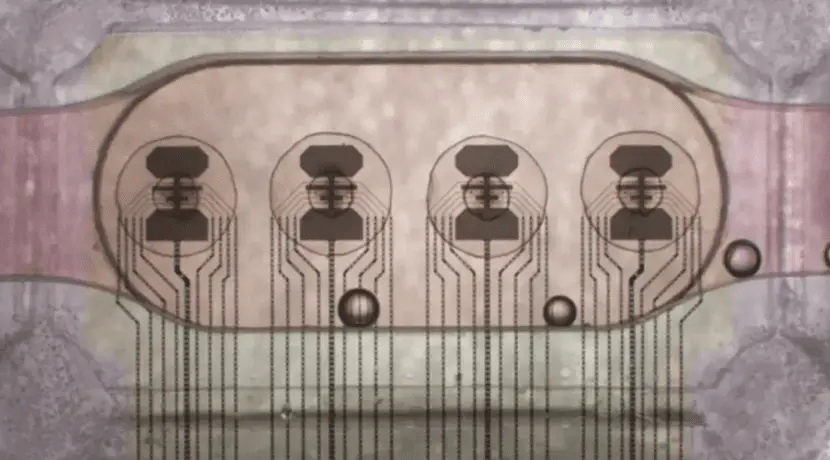Living computer made from human brain cells
16 cerebral organoids 30. May 2024 6:09 p.m. Robert Klatt The start-up FinalSpark has created a living computer from human stem cells. In the future, bioprocessors are expected to reduce the energy requirements of data centers and supercomputers. Vevey (Switzerland). The start-up FinalSpark created a living computer from 16 human brain organoids. Organoids are organ-like […]

16 cerebral organoids
Robert Klatt
The start-up FinalSpark has created a living computer from human stem cells. In the future, bioprocessors are expected to reduce the energy requirements of data centers and supercomputers.
Vevey (Switzerland). The start-up FinalSpark created a living computer from 16 human brain organoids. Organoids are organ-like microstructures grown from tissue cells, embryonic stem cells, or induced pluripotent stem cells. They do not have vessels, but nevertheless possess organ-like properties that allow them to mimic the functions and structure of the brain.
FinalSpark’s living bioprocessor can learn and process information, according to the company. The neuroplatform would be around a million times more efficient than conventional processors.
Bioprocessor from cerebral organoids
According to FinalSpark, the system consists of four multielectrodes, each containing four living organoids. These are each connected to eight individual electrodes that can stimulate brain cells with electrical signals and record the electrical signals coming from the brain cells. In order to provide nutrients to the organoids, they are in a special solution. Their lifespan is approximately three months.
Fred Jordan, CEO of FinalSpark, explains that the development of bioprocessors is still in its early stages. However, according to him, living computers could significantly reduce the high energy requirements of data centers and supercomputers in the future.
“Imagine the state of quantum computing research 20 years ago: that’s where we are today with biocomputers.”
As an example, the company cites the training of the Large Language Model (LLM) GPT-3, which required around ten gigawatt hours (GWh) of electricity. If a bioprocessor had been used instead, the energy requirements of artificial intelligence (AI) would be negligible.
However, FinalSpark scientists explain that it will be a long time before bioprocessors can be used industrially, in part because the organoids’ neurons need to be trained. FinalSpark therefore works with several universities.














